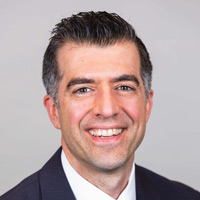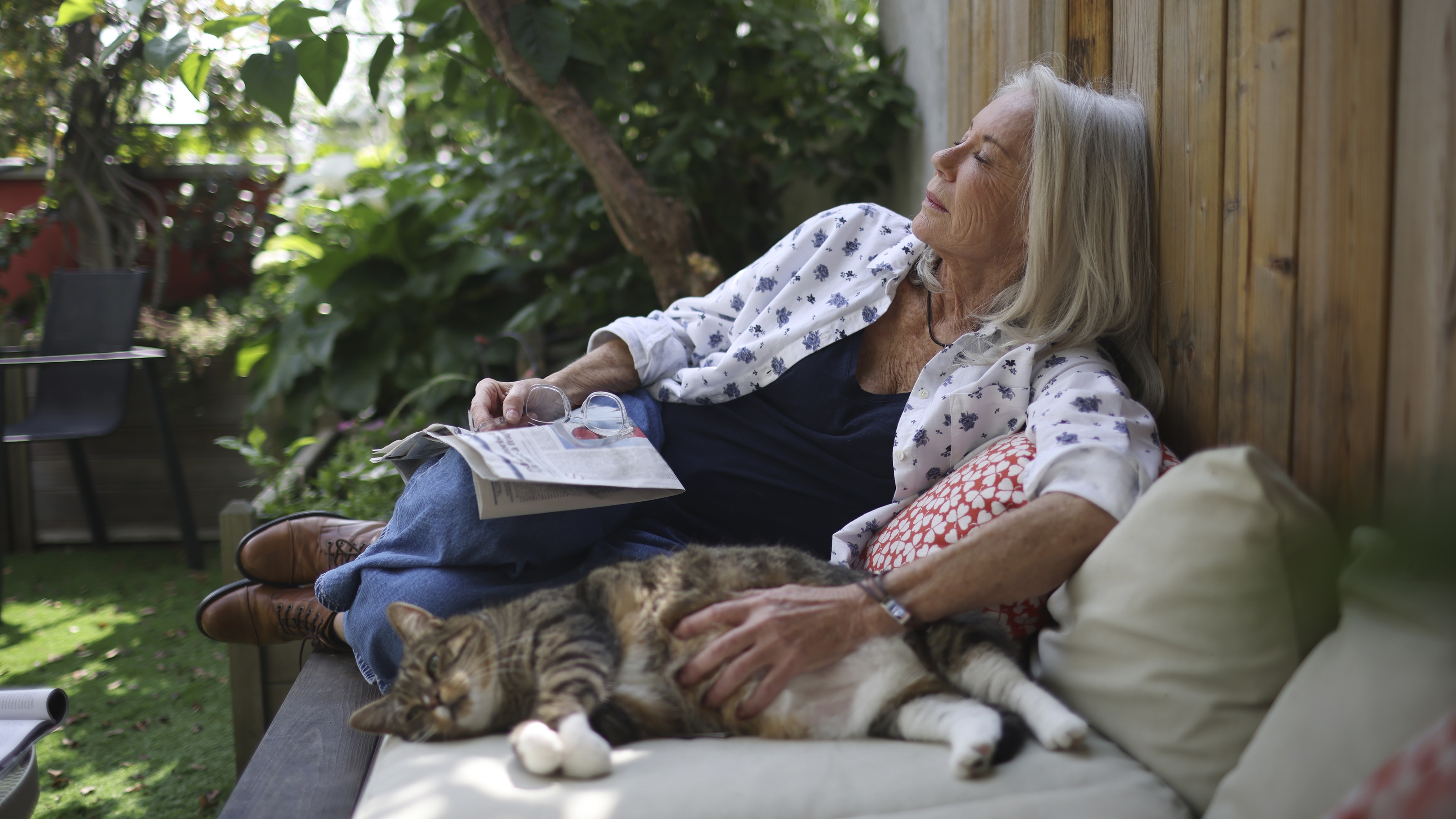The Biggest Risk Retirees Face Right Now
Those nearing retirement and those who have recently become retirees need to plan now for the possibility of a bear market. Here are two ways to do that, including one that goes against conventional wisdom.


Those planning to retire face many risks. There is the risk their money will not earn enough to keep up with inflation, and there is the risk of outliving one’s money, for example. But perhaps, the biggest risk retirees face now is more immediate: Retiring in a bear market.
To put this in perspective, First Trust, an asset manager, analyzed the history of bull and bear markets from 1926-2017 and found bull markets — which are up or positive markets — lasted on average nine years. If that is the case, this bull market should be ending right about now, as it just turned 9 on March 9, 2018. Consider also the study found that the typical bear market lasts 1.4 years, with an average cumulative loss of 41%.
Not to be all doom and gloom, but the chart below illustrates why the biggest risk retirees face right now is a bear market. It shows what happens to two identical $1 million portfolios, depending on the timing of bad stock market years.
From just $107.88 $24.99 for Kiplinger Personal Finance
Become a smarter, better informed investor. Subscribe from just $107.88 $24.99, plus get up to 4 Special Issues

Sign up for Kiplinger’s Free Newsletters
Profit and prosper with the best of expert advice on investing, taxes, retirement, personal finance and more - straight to your e-mail.
Profit and prosper with the best of expert advice - straight to your e-mail.
| Age | Market gain/loss | Mrs. Jones Portfolio value | Market gain/loss | Mr. Smith Portfolio value | Annual Withdrawal* |
|---|---|---|---|---|---|
| 66 | 0.22 | $1,160,000 | -0.07 | $870,000 | $60,000 |
| 67 | 0.15 | 1,272,200 | -0.04 | 773,400 | 61,800 |
| 68 | 0.12 | 1,361,210 | 0.12 | 802,554 | 63,654 |
| 69 | -0.04 | 1,241,198 | 0.15 | 857,373 | 65,564 |
| 70 | -0.07 | 1,086,784 | 0.22 | 978,465 | 67,531 |
| 71 | 0.22 | 1,256,320 | -0.07 | 840,416 | 69,556 |
| 72 | 0.15 | 1,373,124 | -0.04 | 735,156 | 71,643 |
| 73 | 0.12 | 1,464,107 | 0.12 | 749,583 | 73,792 |
| 74 | -0.04 | 1,329,536 | 0.15 | 786,014 | 76,006 |
| 75 | -0.07 | 1,158,182 | 0.22 | 880,651 | 78,286 |
| 76 | 0.22 | 1,332,348 | -0.07 | 738,370 | 80,635 |
| 77 | 0.15 | 1,449,146 | -0.04 | 625,781 | 83,054 |
| 78 | 0.12 | 1,537,497 | 0.12 | 615,329 | 85,546 |
| 79 | -0.04 | 1,387,886 | 0.15 | 619,517 | 88,112 |
| 80 | -0.07 | 1,199,978 | 0.22 | 665,055 | 90,755 |
| 81 | 0.22 | 1,370,495 | -0.07 | 525,023 | 93,478 |
| 82 | 0.15 | 1,479,787 | -0.04 | 407,740 | 96,282 |
| 83 | 0.12 | 1,558,191 | 0.12 | 357,498 | 99,171 |
| 84 | -0.04 | 1,393,717 | 0.15 | 308,976 | 102,146 |
| 85 | -0.07 | 1,190,947 | 0.22 | 271,741 | 105,210 |
| 86 | 0.22 | 1,344,588 | -0.07 | 144,352 | 108,367 |
| 87 | 0.15 | 1,434,659 | -0.04 | 26,960 | 111,618 |
| 88 | 0.12 | 1,491,852 | Row 22 - Cell 3 | Row 22 - Cell 4 | 114,966 |
| 89 | -0.04 | 1,313,762 | Row 23 - Cell 3 | Row 23 - Cell 4 | 118,415 |
| 90 | -0.07 | 1,099,831 | Row 24 - Cell 3 | Row 24 - Cell 4 | 121,968 |
* Adjusted for 3% inflation
Mr. Smith and Mrs. Jones start off with the same $1 million portfolio and make the same annual $60,000 annual withdrawal (adjusted for 3% inflation after the first year). Both experience the same hypothetical returns, but in a different sequence. The difference is the timing. Mrs. Jones enjoys the tailwind of a good market, whereas Mr. Smith’s returns are negative for the first two years.
The impact of increasing withdrawals coupled with poor returns is devasting to Mr. Smith’s long-term performance. In the end, Mrs. Jones has a healthy balance left over, whereas Mr. Smith runs out of money after age 87.
With stock market valuations higher and this bull market overdue, by historical averages, retirees today could be faced with low to poor returns much like Mr. Smith in the first few years of retirement. However, retirees like Mr. Smith still need stocks to help their portfolios grow over time and keep up with the rising costs of living. Unfortunately, no one knows for sure what the equity returns will be in the next year or the year after.
This is the dilemma many retirees face. The point is to be aware of the sequence of return risk, illustrated in the chart above, and take steps now if retirement is in the immediate future.
Here are two of the many planning possibilities retirees today can use to avoid the fate of Mr. Smith:
1. Use a “glide path” for your withdrawals
In a study in the Journal of Financial Planning, Professor Wade Pfau and Michael Kitces make a compelling argument to own more bonds in the first year of retirement, and then gradually increase the allocation to stocks over time. According to the authors’ work, “A portfolio that starts at 30% in equities and finishes at 60% performs better than a portfolio that starts and finishes at 60% equities. A steady or rising glide path provides superior results compared to starting at 60% equities and declining to 30% over time.”
The glidepath strategy flies in the face of conventional wisdom, which says people should stay balanced and gradually conservatize a portfolio later in retirement.
The glidepath strategy is a like a wait-and-see approach: If the stock market craters in the first year of retirement, be glad you were more in bonds. Personally, I would only recommend this strategy to conservative or anxious clients. My concern is what if markets go up as you are slowly increasing your stock exposure — an investor like this could be buying into higher stock prices, which could diminish future returns. An alternative would be to hold enough in cash so one does not need to sell stocks in a down year per se.
Though not for everyone, the glide path approach has its merits: Namely not owning too much in equities if there is a bear market early on in retirement, which coupled with annual withdraws, could wreak havoc on a portfolio like Mr. Smith’s.
2. All hands on deck
The second planning advice for Mr. Smith is to make sure to use all the retirement income tools that are available. For instance, if instead of taking money out of a portfolio that is down for the year, Mr. Smith can withdraw money from his whole life insurance policy in that year, so he doesn’t have to sell his stocks at a loss. This approach will leave his equities alone and give his stocks a chance to hopefully recover in the next rebound.
The key is proper planning ahead of time.
The bottom line
Retirees today face one of the biggest conundrums — how much to own in stocks? With the average retirement lasting 18 years, and health care costs expected to increase by 6%-7% this year, retirees for the most part can ill afford to give up on stocks and the potential growth they can provide. The problem is the current bull market is reaching its maturity by historical standards, and investors who plan on retiring and withdrawing money from their portfolio in the next year or two may be setting themselves up for disaster if this market craters. Just ask Mr. Smith.
There are many ways to combat a sequence of poor returns, including holding enough cash to weather the storm, investing more conservatively in the early years of retirement via a “glide-path” asset allocation, or using alternative income sources so one doesn’t have to sell stocks in a bad market.
The point is to be mindful of the risk and plan accordingly.
Investment advisory and financial planning services are offered through Summit Financial LLC, an SEC Registered Investment Adviser, 4 Campus Drive, Parsippany, NJ 07054. Tel. 973-285-3600 Fax. 973-285-3666. This material is for your information and guidance and is not intended as legal or tax advice. Clients should make all decisions regarding the tax and legal implications of their investments and plans after consulting with their independent tax or legal advisers. Individual investor portfolios must be constructed based on the individual’s financial resources, investment goals, risk tolerance, investment time horizon, tax situation and other relevant factors. Past performance is not a guarantee of future results. The views and opinions expressed in this article are solely those of the author and should not be attributed to Summit Financial LLC. Links to third-party websites are provided for your convenience and informational purposes only. Summit is not responsible for the information contained on third-party websites. The Summit financial planning design team admitted attorneys and/or CPAs, who act exclusively in a non-representative capacity with respect to Summit’s clients. Neither they nor Summit provide tax or legal advice to clients. Any tax statements contained herein were not intended or written to be used, and cannot be used, for the purpose of avoiding U.S. federal, state or local taxes.
Profit and prosper with the best of Kiplinger's advice on investing, taxes, retirement, personal finance and much more. Delivered daily. Enter your email in the box and click Sign Me Up.

Michael Aloi is a CERTIFIED FINANCIAL PLANNER™ Practitioner and Accredited Wealth Management Advisor℠ with Summit Financial, LLC. With 21 years of experience, Michael specializes in working with executives, professionals and retirees. Since he joined Summit Financial, LLC, Michael has built a process that emphasizes the integration of various facets of financial planning. Supported by a team of in-house estate and income tax specialists, Michael offers his clients coordinated solutions to scattered problems.
-
 AI Stocks Lead Nasdaq's 398-Point Nosedive: Stock Market Today
AI Stocks Lead Nasdaq's 398-Point Nosedive: Stock Market TodayThe major stock market indexes do not yet reflect the bullish tendencies of sector rotation and broadening participation.
-
 Top Tech Gifts to Grab at Walmart Before Christmas
Top Tech Gifts to Grab at Walmart Before ChristmasBig savings on Apple, Bose, HP, Vizio and more while there's still time to shop.
-
 AI Appliances Aren’t Exciting Buyers…Yet
AI Appliances Aren’t Exciting Buyers…YetThe Kiplinger Letter Artificial intelligence is being embedded into all sorts of appliances. Now sellers need to get customers to care about AI-powered laundry.
-
 Quick Question: Are You Planning for a 20-Year Retirement or a 30-Year Retirement?
Quick Question: Are You Planning for a 20-Year Retirement or a 30-Year Retirement?You probably should be planning for a much longer retirement than you are. To avoid running out of retirement savings, you really need to make a plan.
-
 Don't Get Caught by the Medicare Tax Torpedo: A Retirement Expert's Tips to Steer Clear
Don't Get Caught by the Medicare Tax Torpedo: A Retirement Expert's Tips to Steer ClearBetter beware, because if you go even $1 over an important income threshold, your Medicare premiums could rise exponentially due to IRMAA surcharges.
-
 I'm an Insurance Pro: Going Without Life Insurance Is Like Driving Without a Seat Belt Because You Don't Plan to Crash
I'm an Insurance Pro: Going Without Life Insurance Is Like Driving Without a Seat Belt Because You Don't Plan to CrashLife insurance is that boring-but-crucial thing you really need to get now so that your family doesn't have to launch a GoFundMe when you're gone.
-
 I'm a Tax Attorney: These Are the Year-End Tax Moves You Can't Afford to Miss
I'm a Tax Attorney: These Are the Year-End Tax Moves You Can't Afford to MissDon't miss out on this prime time to maximize contributions to your retirement accounts, do Roth conversions and capture investment gains.
-
 I'm an Investment Adviser: This Is the Tax Diversification Strategy You Need for Your Retirement Income
I'm an Investment Adviser: This Is the Tax Diversification Strategy You Need for Your Retirement IncomeSpreading savings across three "tax buckets" — pretax, Roth and taxable — can help give retirees the flexibility to control when and how much taxes they pay.
-
 Could an Annuity Be Your Retirement Safety Net? 4 Key Considerations
Could an Annuity Be Your Retirement Safety Net? 4 Key ConsiderationsMore people are considering annuities to achieve tax-deferred growth and guaranteed income, but deciding if they are right for you depends on these key factors.
-
 I'm a Financial Pro: Older Taxpayers Really Won't Want to Miss Out on This Hefty (Temporary) Tax Break
I'm a Financial Pro: Older Taxpayers Really Won't Want to Miss Out on This Hefty (Temporary) Tax BreakIf you're age 65 or older, you can claim a "bonus" tax deduction of up to $6,000 through 2028 that can be stacked on top of other deductions.
-
 Meet the World's Unluckiest — Not to Mention Entitled — Porch Pirate
Meet the World's Unluckiest — Not to Mention Entitled — Porch PirateThis teen swiped a booby-trapped package that showered him with glitter, and then he hurt his wrist while fleeing. This is why no lawyer will represent him.